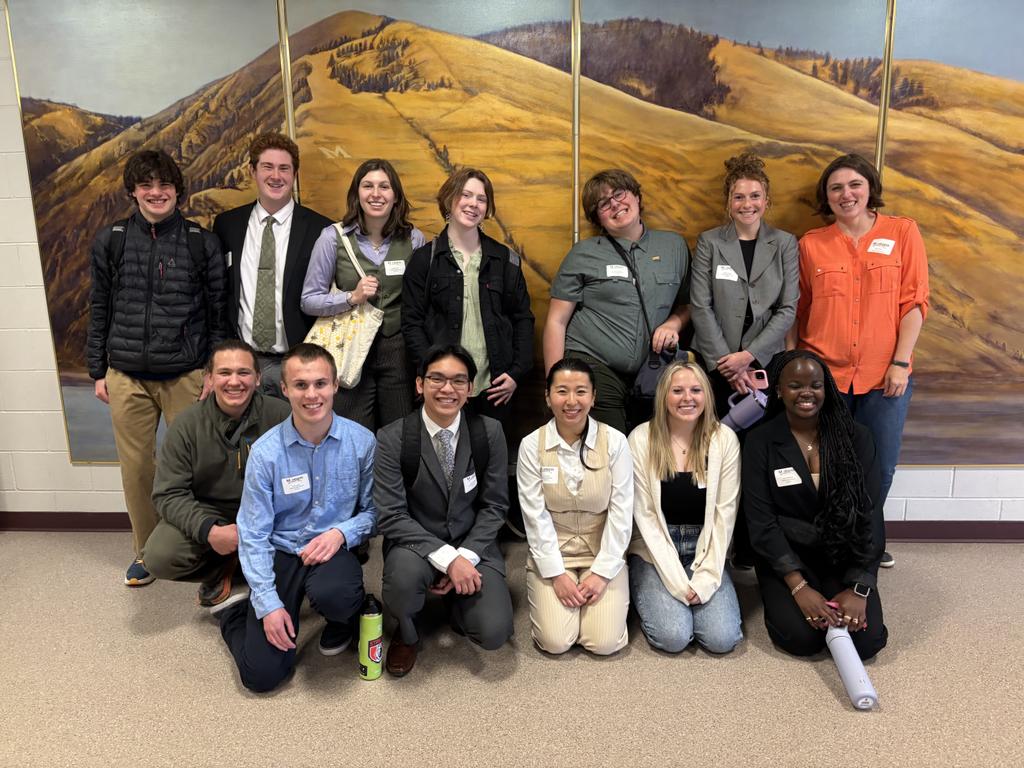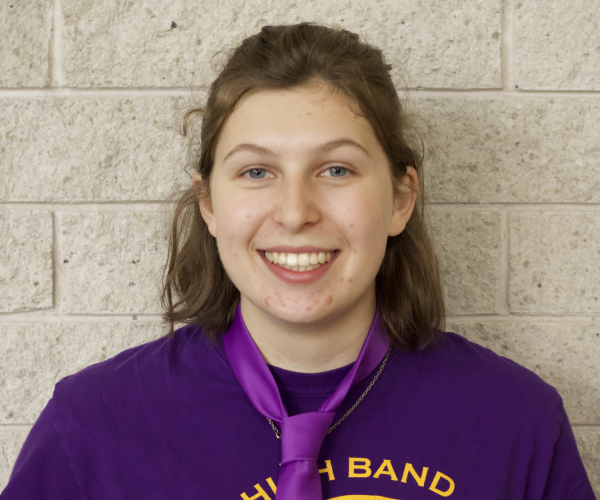On March 31st, middle school and high school students from across the state of Montana gathered at the University of Montana’s Adams Center to share the results of months of work with peers, family, and pHD judges. The Sentinel Advanced Problems in Science class, run by Kelly Nelson, attended with twelve Sentinel students who have spent the last 5-12 months doing research and field work for their projects.
This APS class is unique because these students worked with professionals in their chosen fields to learn more about conducting research in a formal lab setting as well as analyzing and conveying scientific results. This allowed the students to get real life, hands-on experience while still in high school. The projects ranged from chemistry to animal science to medicine and even environmental science, with unique studies and findings from each and every student.
The students had many components to their projects, including a poster, quad chart, and research plan essay to provide the most accurate and scientific results possible.
For many decades, Montana has been known to lack in STEM education, specifically in STEM diversity. The average teen’s interest in STEM in Montana is significantly lower than in most other states around the country, and only about 9% of students actually pursue a higher education in a STEM related field.
Much of this is due to a lack of access to STEM opportunities or a lack of funding. It has also been found that when students begin learning about STEM at a young age, they are more likely to continue in a STEM field.
In order to provide a solution for this lack of STEM education, the Montana Science Fair was started in 1955 as an affiliate of the International Science and Engineering Fair (ISEF). This year marks the 70th annual Montana Science Fair. The fair promotes STEM amongst youth in Montana and inspires kids to be curious about the world around them. Since its beginning, hundreds of kids have been competing every year to impress the judges and showcase their research.
Sentinel had three students make it to the second round of judging, marking their projects as the top 10% of contesting students. These projects include Adaline Schick’s project on wild horse genetics, Lydia Becker’s Project on soil organic matter, and Lily Khang’s project on Intracellular pH. These projects are displayed in the Sentinel science wing for student viewing.
The top three winners of the Montana Science Fair are invited to participate at ISEF with 1,700 other students from around the world from May 11th-16th. One of these winners is Sentinel senior, Lily Khang.
Khang has participated in the science fair for two years now and was excited to win third place at this year’s fair after many months of work.
Her project will compete with projects from over 75 countries, regions, and territories. The ISEF competition offers over eight million dollars in prizes and scholarships for students in many different research categories. ISEF also provides incredible opportunities for networking and spreading research results.
Lily Khang’s project investigated the role of intracellular pH through the study of fruit flies. Fruit flies are incredibly applicable to human medicine and research due to a similarity in genes, and Khang’s work could aid knowledge in Alzheimer’s, Huntington’s disease, and Parkinson’s disease, which are all related to pH regulation.
Khang worked in a University lab to take pH regulators out of fruit flies and observe their behavior. The flies were kept in vials and observed as they aged. Going into her project, Khang hypothesized that the flies without the pH regulators would not be able to climb to the top of a vial, especially as they got older. It turned out that she was right! (Mostly)
She found that the female flies had more trouble climbing than their male counterparts without the pH regulator. She also noted that the differences between the female and male flies was the strongest trend throughout her data. This finding could be incredibly important in future research as there is little gender differentiation in current research and knowledge.
Along with this, Sentinel won second place for large schools through the culmination of all of the APS projects and brought home an impressive trophy for their efforts. Individual awards were given out to the students as well, with over 1,700 dollars in cash prizes and gift bags containing textbooks, tools, wildlife guides, and even a rock hammer.
Ms. Nelson, who has been teaching APS for over seven years, said that the students “did great” this year and is proud of their accomplishments. She will travel with Khang to Columbus, Ohio to attend the ISEF fair.
Many people do not expect kids’ science fairs to produce notable or unique results, but Khang’s research, along with the research of all of the participants, is crucial in advancing knowledge and can be used in future endeavors. Many students specifically targeted pressing issues such as climate change to provide solutions. Some of these projects include finding a way to break down microplastics, promote carbon sequestration, and even design systems to collect and filter water for desert areas.
Students also tackled issues such as cancer cell treatment and gene editing to provide advancements in medical technology. While it is rare for a student to have a fully formed solution, the ideas and data collected and shared at the science fair is incredibly valuable and applicable to the wider world.
While the science fair was the main event for the APS students, they still have more work to do, including writing final research papers, presenting their work, and of course, going out into the world after high school and applying their findings.




